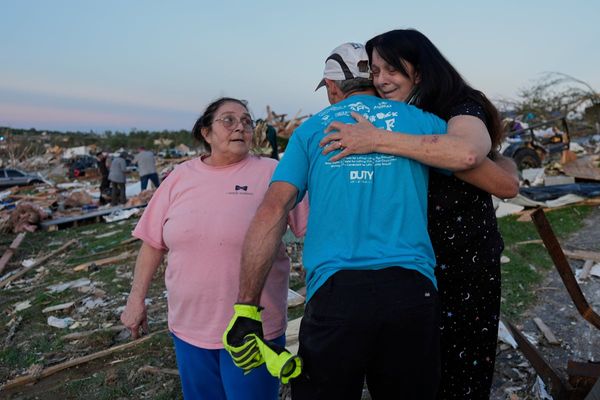
If you are a parent of small children, you know that YouTube without content filters (and sometimes even with filters) is nothing short of a cesspool. Clicking on a video of Elmo singing “If You’re Happy and You Know It,” for instance, could prompt the algorithm to suggest, say, a Macedonian studio’s computer-animated version of that same song, which in turn leads to another video from that same studio, which in turns leads it to a video of an unlicensed Elmo’s head being popped like a bubble by an unlicensed version of Peppa Pig. It is far from a child-friendly environment, and by many parents’ accounts, YouTube Kids is not much better.
That’s why it was not surprising (though extremely dispiriting) to hear none other than YouTube CEO Susan Wojcicki admit, in an interview with 60 Minutes, that she herself does not allow her young children to watch YouTube proper. While she does allow them to watch YouTube Kids, “I limit the amount of time that they’re on it,” Wojcicki, the mother of five, said in the interview with 60 Minutes’ Lesley Stahl. “I think too much of anything is not a good thing.”
Under Wojcicki’s tenure, which began in 2014, YouTube has faced intense criticism for failing to provide a child-friendly environment on its platform. In 2017, YouTube was accused of turning a blind eye to violent and disturbing content that was targeted to kids and promoted by its recommendation algorithm. YouTube’s ostensibly child-friendly platform, YouTube Kids, which the company says uses a machine-learning algorithm to exclusively promote and recommend content appropriate for kids under the age of 13, has also been accused of hosting violent and disturbing content, such as videos featuring Paw Patrol characters dying by suicide to Mickey Mouse being run over by a car.
Earlier this year, an urban legend circulated featuring a grotesque character named Momo, who was said to urge children to self-harm and take their own lives; while there was no substance to the rumor, the fact that YouTube has consistently proven to be a toxic environment for children allowed it to gain significant traction and go viral in parenting Facebook groups.
YouTube has also been accused of preying on young children in other ways. In September, the Federal Trade Commission (FTC) fined the platform $170 million for violating the Children’s Online Privacy Protection Act (COPPA), alleging that the platform collected children’s data without parental consent. Earlier this year, it was also forced to disable comments sections for millions of videos when it was reported that child predators were using them as a way to find and groom children.
Such allegations are extremely disturbing, particularly in light of data suggesting that the majority of American children use or have used YouTube. Indeed, many of the most popular children’s entertainment personalities have garnered enormous fan bases on the platform, such as the children’s entertainer Blippi, whose content is aimed at toddlers and who has more than 6.5 million subscribers.In one 2018 Pew Research report, 81% of parents with children under 11 said they had allowed their children to watch videos on the app, while 34% said they let their children watch YouTube regularly; of these parents, 61% said they’d found content they considered unsuitable for children (the study did not specify whether the parents in question let their children watch YouTube, YouTube Kids, or both).
In response to Rolling Stone‘s request for comment, a spokesperson for YouTube said, “We’ve always been clear that YouTube is for those over the age of 13 and terminate account belonging to those that are under 13, when we become aware,” adding that the platform terminates thousands of these accounts per week. YouTube has also historically responded to allegations that the platform exploits children by arguing that violent or disturbing content aimed at kids is exceptionally rare. Malik Ducard, YouTube’s global head of family and learning content, told the New York Times in 2017 that they were “the extreme needle in the haystack” and that within a 30-day period, less than .005 percent of videos on YouTube Kids were removed for featuring inappropriate content. Yet some of its more recent policy changes seem to suggest the company is placing the onus on creators to remedy some of its issues regarding children. Last month, the company announced that creators would have to label their videos aimed at children accordingly, resulting in creators becoming concerned they would individually face action from the FTC if they are found to be in violation of COPPA.
Wojcicki’s comments to 60 Minutes also suggest the company is putting the onus on parents to shield their children from inappropriate content, as opposed to cracking down on such content themselves. In a Guardian interview from last August, Wojcicki also stressed the importance of kids learning “how to manage technology responsibly. Just like you talk to your kids about what you do when you go out on the street, you need to have a conversation with them about safety on the internet, and also find a way to manage screen time and balance that with other activities.” This message has become popular among Silicon Valley CEOs fending off parental concerns about technology.
Suggesting to parents that they limit their children’s screen time is, on its face, sober-minded parenting advice — but it’s not exactly the type of messaging you’d expect from the CEO of a company selling a product that is, at least in theory, targeted at children. More to the point, it reflects a refusal to acknowledge just how many children and parents use the platform on a regular basis. It’s all well and good for the CEO of a multibillion-dollar company to suggest to parents that they limit kids’ potential exposure to disturbing content by limiting their screen time, but that also doesn’t change the fact that many parents who might lack Wojcicki’s resources depend on YouTube as an educational tool (and, yes, as an impromptu nanny at times) for their young children. And the responsibility of sparing these children the trauma of seeing Elmo’s head explode largely rests on Wojcicki’s shoulders, not on their parents’.







